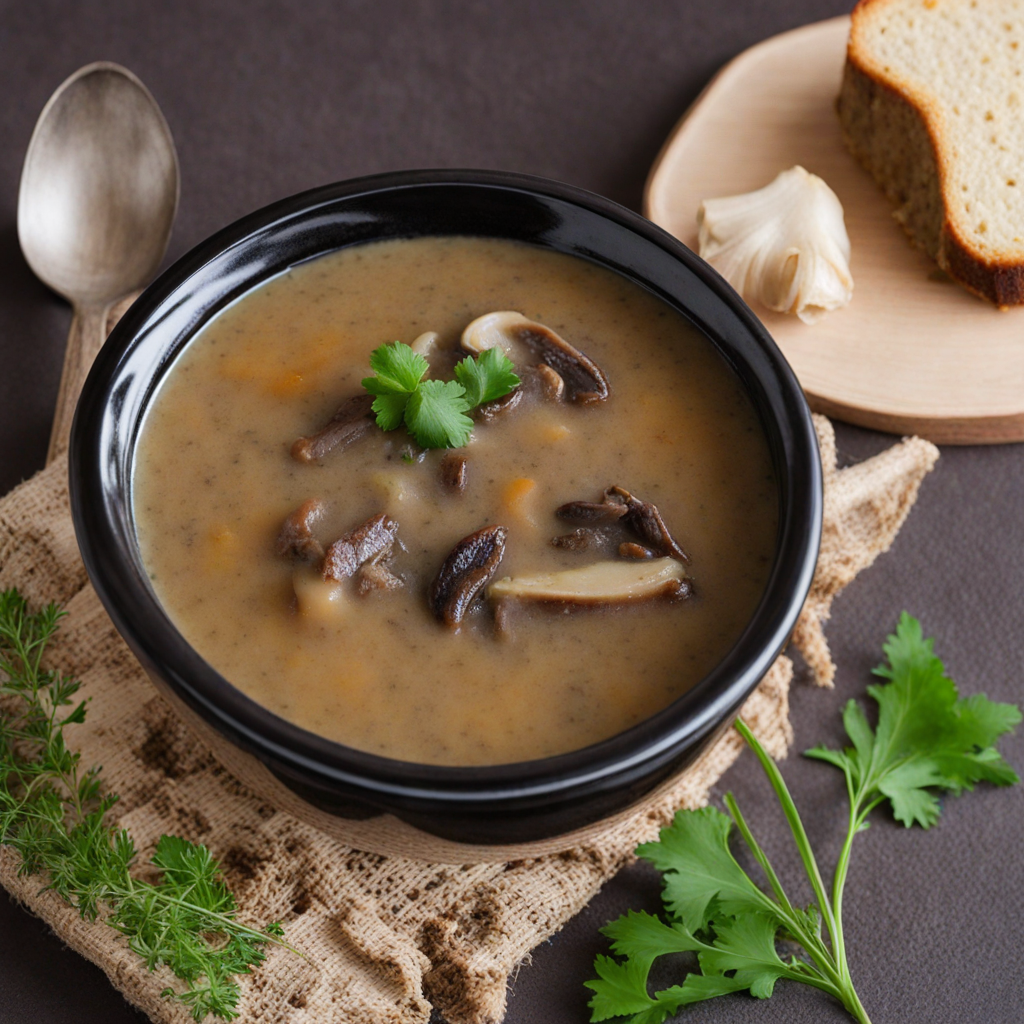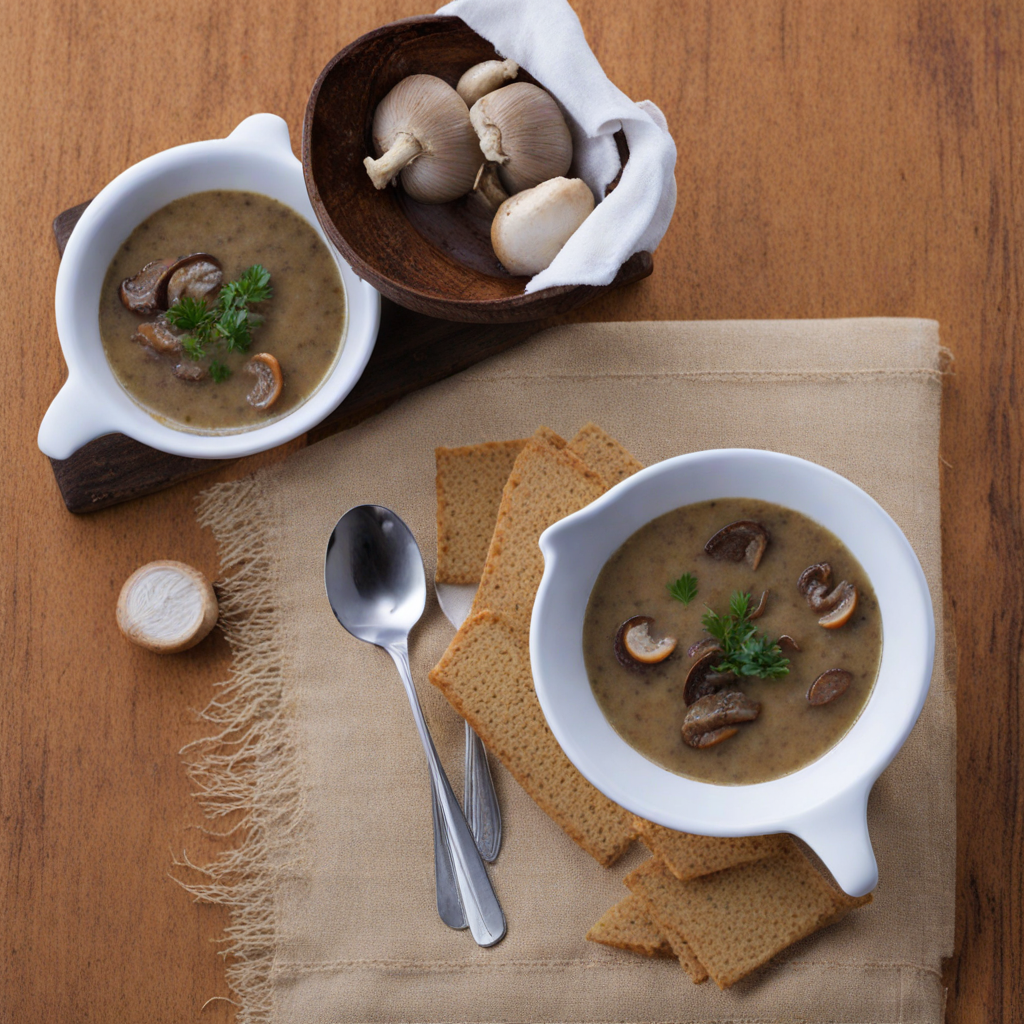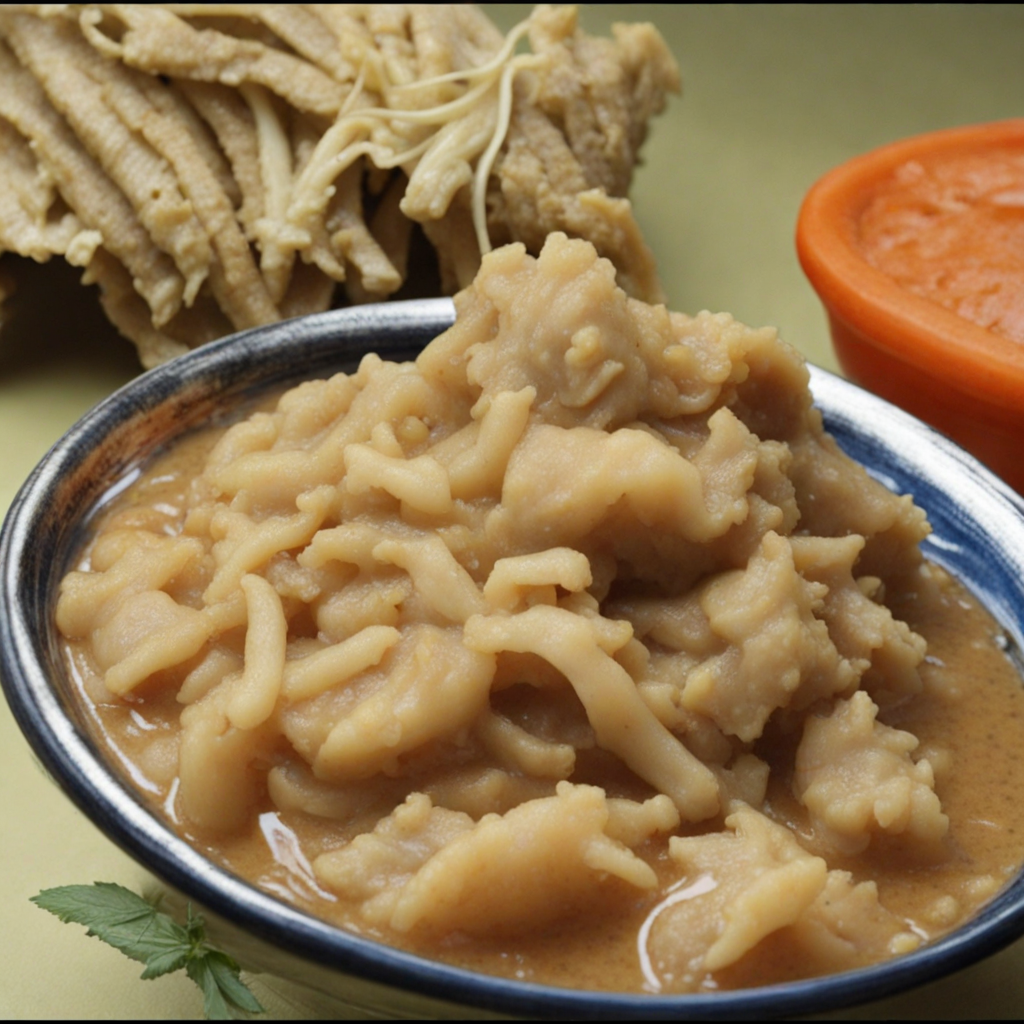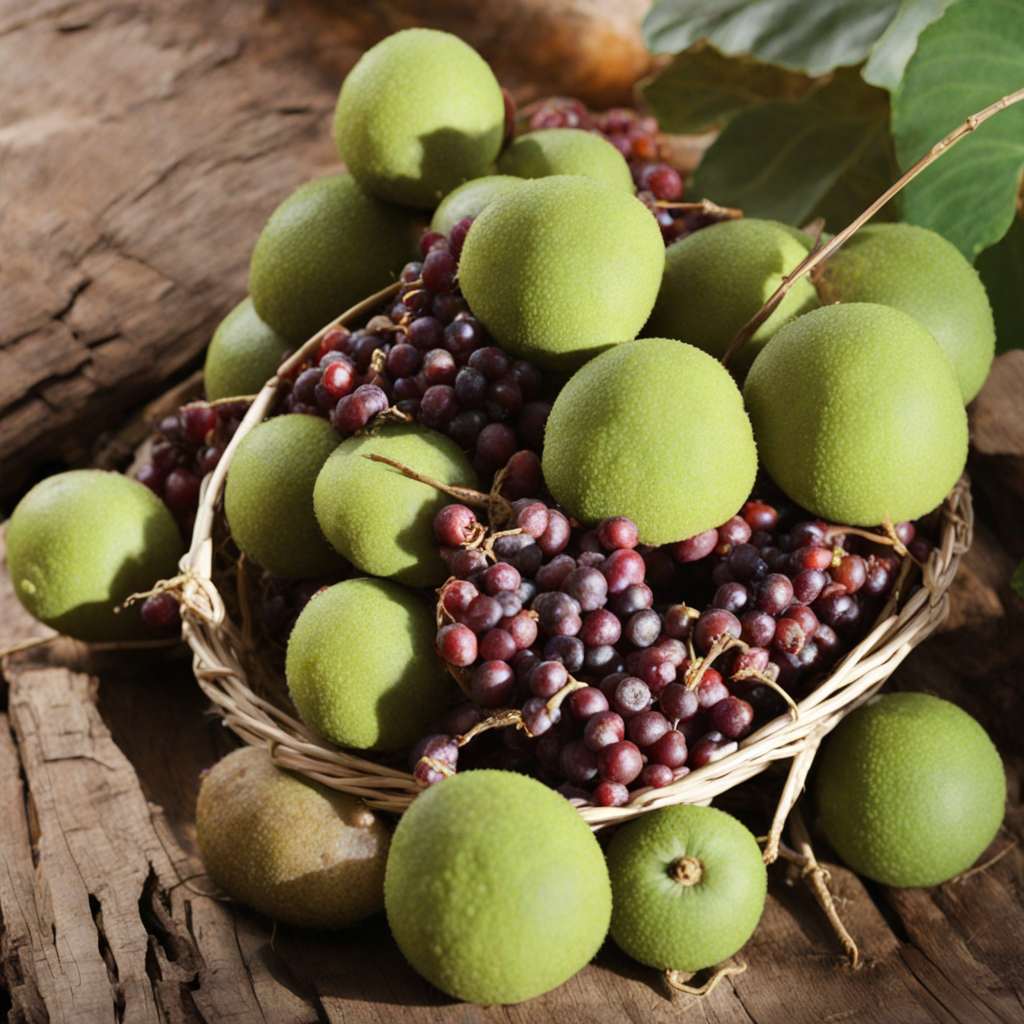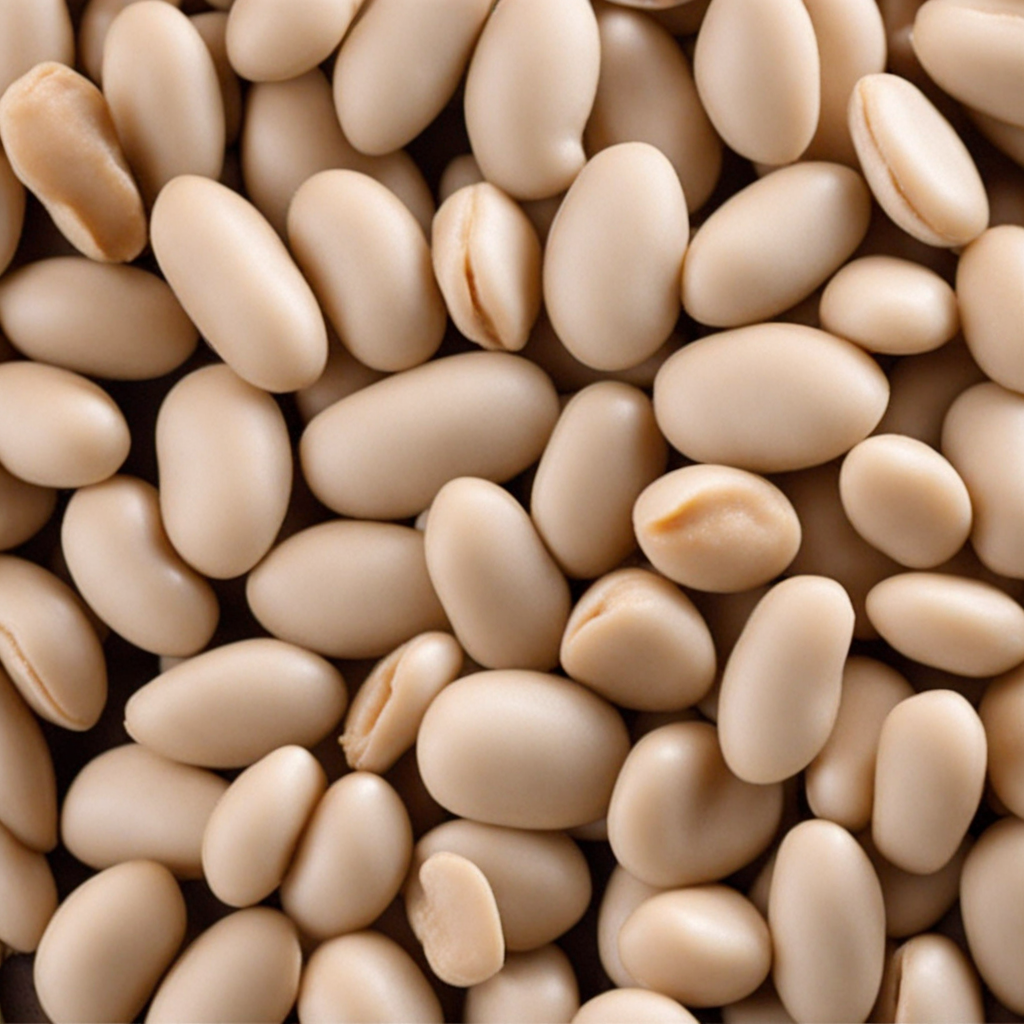Nhedzi Soup
Nhedzi Soup is a delightful and hearty dish from Zimbabwe, known for its rich flavors and unique ingredients. The main star of this soup is the Nhedzi mushroom, which is foraged from the wild and celebrated for its earthy, umami taste. The mushrooms are typically combined with a variety of other local ingredients, such as leafy greens, tomatoes, and spices, creating a vibrant medley of flavors that reflect the region's agricultural bounty. The soup is often thickened with ground nuts or grains, adding a creamy texture that enhances its comforting qualities. The preparation of Nhedzi Soup involves a careful balancing of flavors. The mushrooms are sautéed to release their deep, savory notes, while the addition of fresh vegetables adds brightness and freshness to the dish. Traditional spices, such as garlic, ginger, and chili, are incorporated to elevate the flavor profile, giving the soup a warm kick that is both inviting and satisfying. The combination of these ingredients results in a dish that is both nourishing and flavorful, making it a favorite among locals and a must-try for visitors seeking to explore Zimbabwean cuisine. Nhedzi Soup is often enjoyed with a side of sadza, a staple maize porridge that perfectly complements the richness of the soup. The combination is not only filling but also showcases the harmonious relationship between the various elements of Zimbabwean culinary traditions. Eating Nhedzi Soup is more than just a meal; it is an experience that connects you to the land and the culture of Zimbabwe, making it a delightful discovery for anyone looking to expand their palate and indulge in the unique flavors of this vibrant cuisine.
How It Became This Dish
The Culinary Journey of Nhedzi: A Zimbabwean Delicacy #### Origins of Nhedzi Nhedzi, also known as mopane worms, is a traditional food originating from the southern regions of Africa, particularly Zimbabwe, where it has deep cultural roots. These edible caterpillars belong to the Emperor Moth species, scientifically known as *Gonimbrasia belti*, and are primarily found in the mopane tree forests, which are abundant in the region. The harvesting of these worms typically occurs during the rainy season, when the trees are lush and the caterpillars are most abundant. The origins of Nhedzi are tied to the indigenous communities of Zimbabwe, particularly the Shona people. Historically, the consumption of mopane worms was born out of necessity. In a region where food security can fluctuate due to droughts and unpredictable weather patterns, foraging for wild food sources like Nhedzi provided a vital supplement to the local diet. Over the centuries, communities learned to harvest and prepare these caterpillars, integrating them into their culinary practices. #### Cultural Significance Nhedzi holds a prominent place in the cultural tapestry of Zimbabwe. It is not merely a food item; it embodies a way of life, a connection to the land, and a reflection of resilience. For many communities, the seasonal harvest of mopane worms is a communal event, marked by stories, songs, and traditions passed down through generations. The gathering and processing of Nhedzi fosters social bonds and reinforces cultural identity, particularly among women, who often take the lead in these activities. In addition to its nutritional value, Nhedzi is a symbol of resourcefulness. The ability to utilize local resources for sustenance is a testament to the ingenuity of indigenous peoples. Nhedzi is rich in protein, making it an essential dietary component for families, especially during periods of food scarcity. The worms are often dried or smoked, allowing them to be preserved for months, and are rich in essential nutrients, including iron and calcium, making them an important part of the diet in many households. #### Preparation and Culinary Uses Traditionally, the preparation of Nhedzi involves several steps. After harvesting, the caterpillars are boiled to remove any impurities, then dried in the sun. Once dried, they can be cooked in various ways, including frying, stewing, or incorporating them into traditional dishes. Nhedzi is often paired with sadza, a staple maize porridge, or used as a protein-rich ingredient in vegetable stews. The flavor of Nhedzi is often described as nutty, and the texture can vary from chewy to crunchy, depending on the preparation method. In urban areas, Nhedzi has evolved to become a gourmet food item, finding its way onto restaurant menus, where chefs experiment with modern culinary techniques while honoring traditional flavors. This innovation has helped elevate the status of Nhedzi beyond its humble origins. #### Development Over Time As Zimbabwean society has evolved, so too has the role of Nhedzi in the culinary landscape. In the past, Nhedzi was primarily consumed in rural areas, but globalization and urbanization have led to a resurgence of interest in traditional foods. As people move to cities, there has been a growing awareness and appreciation for indigenous ingredients, and Nhedzi has become a culinary bridge connecting urban dwellers with their rural roots. The rise of the health food movement has also contributed to Nhedzi's popularity. As more people seek out alternative protein sources, the nutritional benefits of mopane worms are being recognized on a larger scale. They are often promoted as a sustainable food source, given their minimal environmental impact compared to conventional livestock farming. This has sparked interest not only among local consumers but also among international markets, with potential for export and increased awareness of Zimbabwean cuisine on the global stage. Furthermore, the culinary landscape of Zimbabwe is increasingly being shaped by the younger generation, who are keen to explore their heritage while integrating modern cooking practices. Social media platforms have become a space for food enthusiasts to share recipes, cooking tips, and personal stories related to Nhedzi, creating a vibrant online community around this traditional food. This digital engagement has helped demystify Nhedzi for those unfamiliar with it, inviting more people to explore its unique flavors and textures. #### Challenges and Conservation Despite its cultural and nutritional significance, the harvesting of Nhedzi is not without challenges. Overexploitation of mopane worms due to increased demand can threaten their populations and the ecosystems they inhabit. Climate change poses additional risks, as changing weather patterns can disrupt the lifecycle of the mopane trees and the caterpillars that depend on them. Sustainable harvesting practices are crucial to ensure that future generations can continue to enjoy Nhedzi. Efforts are being made to promote sustainable practices among local communities. Education on sustainable harvesting techniques, alongside the development of policies to protect mopane tree habitats, is essential in balancing the cultural heritage associated with Nhedzi and the environmental challenges faced. Community-led initiatives that emphasize conservation while allowing for the continued harvesting of Nhedzi are vital in preserving this important food source. #### Conclusion Nhedzi is more than just a culinary delight; it is a profound representation of Zimbabwe's cultural heritage, resilience, and adaptability. From its origins as a vital food source for indigenous communities to its contemporary status as a celebrated delicacy, Nhedzi encapsulates the journey of a nation that honors its past while embracing the future. As Zimbabwe continues to navigate the challenges of modernization and environmental change, Nhedzi remains a testament to the enduring connection between food, culture, and identity. The future of this cherished delicacy lies not only in its preparation and consumption but in the collective efforts of communities to preserve the traditions and ecosystems that sustain it.
You may like
Discover local flavors from Zimbabwe


